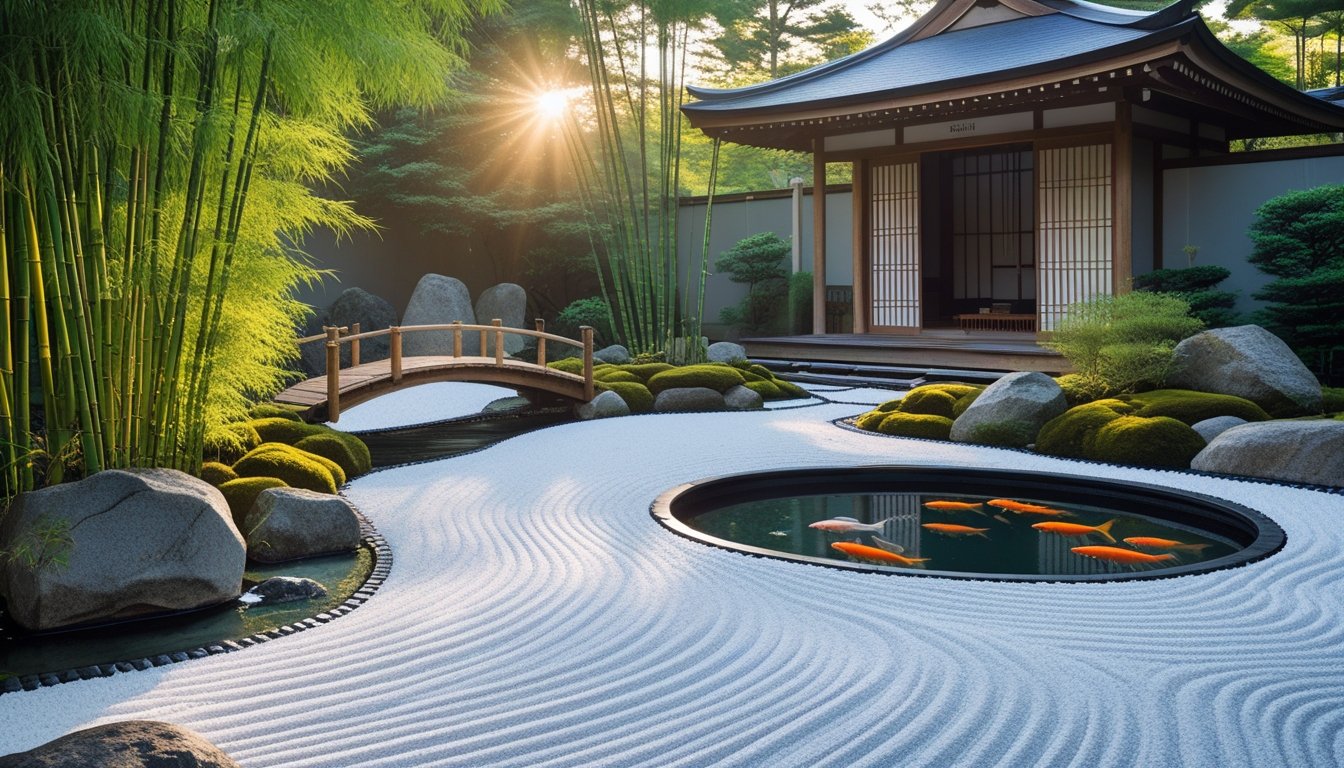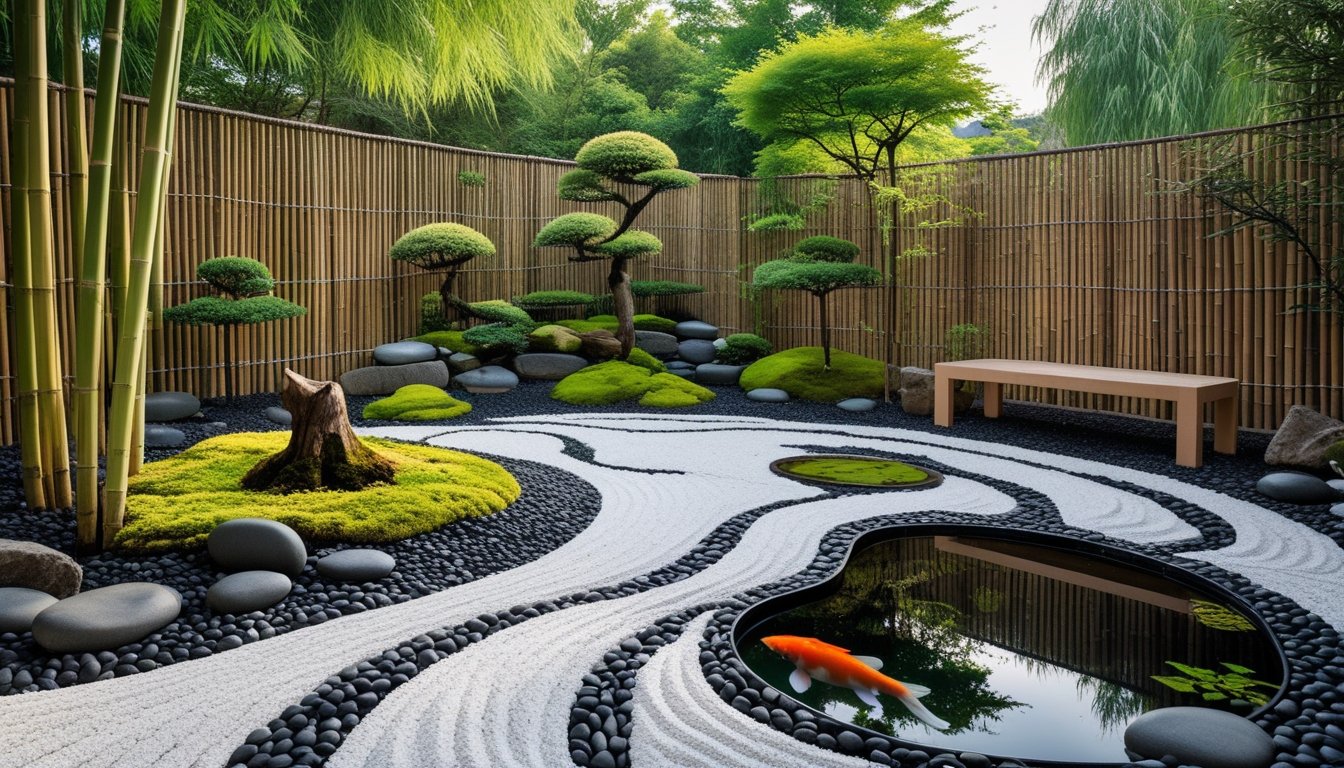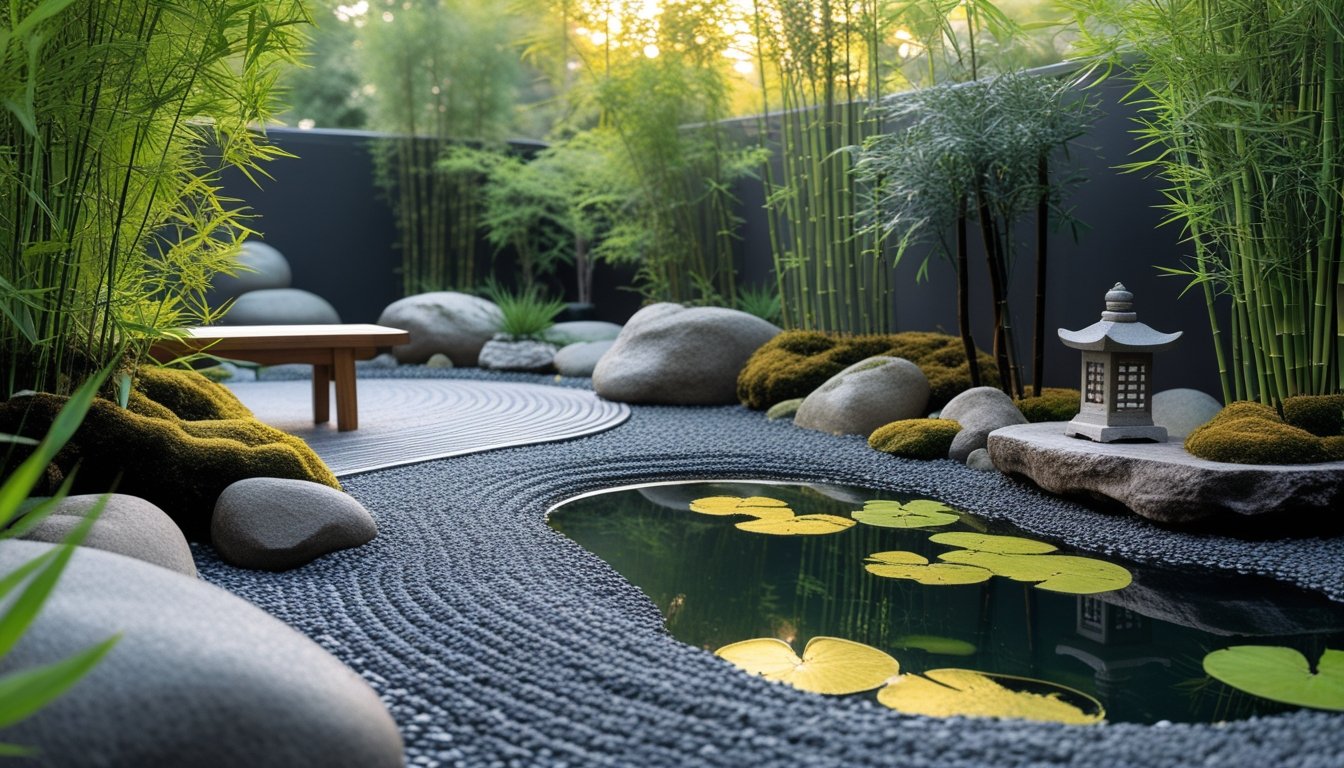Late updated: 09 Jul 2025 13:07
Written by: James Whitaker
Designing A Tranquil Zen Garden Retreat For Relaxation: Creating Your Peaceful Oasis
Creating a Zen garden retreat is a wonderful way to escape the noise and chaos of everyday life. By integrating natural elements like rocks, sand, and water, these gardens transform any space into a sanctuary of calm and mindfulness. Designing a tranquil Zen garden retreat involves focusing on simplicity and balance, allowing us to cultivate a space where relaxation and self-reflection come naturally.

As we consider the essential elements for a Zen garden, it's important to choose components that evoke peacefulness and harmony. Think about incorporating features such as raked gravel, delicate plants, and smooth stones, each carefully placed to enhance the garden's serene aesthetic. These features not only add beauty but also help reduce stress and encourage meditation.
Whether you're aiming for a traditional design or a more modern interpretation, a well-thought-out Zen garden provides the perfect backdrop for unwinding and connecting with nature. This guide will explore key ideas and principles to inspire your creation of a personal retreat that fosters tranquillity and relaxation.
Key Takeaways
- Focus on simplicity and balance for a relaxing garden
- Integrate natural materials to enhance serenity
- Consider both traditional and modern design elements
Fundamental Principles of Designing a Tranquil Zen Garden Retreat
At the heart of designing a Zen garden retreat lies the art of simplicity and balance. Embracing natural materials like stone, sand, and bamboo, we aim to create an environment where tranquility thrives.
Core Concepts of Zen Gardens
Zen gardens encapsulate a philosophy of calmness and reflection. Central to this design are asymmetry and naturalism, which guide the layout and selection of elements. Asymmetry allows freedom, as elements are placed purposefully, avoiding rigid patterns. This promotes serenity and balance, essential for meditation spaces. Naturalism encourages a raw, untouched look, often mirroring the Japanese landscape. Combining these elements helps us craft a space that feels organic and inviting, effortlessly guiding us to focus inward and find harmony.
Achieving Balance and Simplicity
Achieving balance requires careful alignment of garden elements like stones and gravel. In a traditional Japanese Zen garden, stones symbolise mountains or islands, while raked sand or gravel mimics the sea. These features work together in a modest arrangement, exuding serenity. Simplicity is key. Each item serves a purpose; therefore, less is more. Overcrowding with too many elements detracts from tranquillity. Instead, we focus on creating a clean, uncluttered look that invites peace. The gentle raking of sand into patterns adds to the calming effect and offers meditative practice.
Selecting Natural Materials and Elements
Materials like gravel, rock, and bamboo are staples in Zen garden design. Gravel is often raked into patterns, evoking water flow and providing texture. Rocks, in varied sizes and shapes, are strategically placed to offer visual interest and define space. Pathways made from stones create a natural flow through the garden. The inclusion of bamboo can further enhance the atmosphere, whether used for fencing or as an accent plant. Together, these materials connect the garden to nature, encouraging a relaxing experience. Choosing natural, local materials also reinforces sustainability and respect for the environment.
Key Features and Design Ideas for a Peaceful Zen Garden Retreat

Designing a tranquil Zen garden involves incorporating natural elements like water, plants, and strategic decor to create a harmonious space. A well-planned Zen garden encourages relaxation and mindfulness, providing a perfect retreat in our own backyard.
Water Features for Relaxation
Water features are central to a peaceful Zen garden, adding both visual appeal and soothing sounds. Options include serene ponds, trickling streams, or a cascading waterfall. A koi pond can introduce vibrant life and movement, while a simple fountain or tabletop water feature provides tranquillity in smaller spaces. Incorporating wooden bridges over water elements enhances the natural charm, inviting us to pause and reflect on the beauty and calm they bring. These features not only inspire serenity but also serve as a focal point for meditative practice.
Incorporating Plants, Moss, and Bamboo
The selection of plants in a Zen garden contributes significantly to its atmosphere. Bonsai trees, ferns, and moss create a lush, green backdrop. Bamboo, whether in the form of living plants or screens, adds a sense of privacy and traditional aesthetic. Incorporating evergreens and drought-resistant plants helps maintain year-round beauty without extensive upkeep. Vertical gardening can be a creative solution for smaller spaces, allowing us to maximise our outdoor area. Pebbles, river stones, and a rock garden can add texture and contrast, supporting a minimalist yet serene design.
Creating Meditation and Mindfulness Spaces
A dedicated space for meditation and mindfulness is essential in a Zen garden. Outdoor cushions or a sand tray can define these areas, encouraging a peaceful retreat for introspection. The layout should be intentional, allowing us to easily transition from one focal point to another. A fire pit can offer warmth and become a gathering place for evening reflection. Ideal meditation spots are secluded but connected to the surrounding garden, reflecting the simplicity and calm we seek.
Decor and Lighting for a Soothing Ambience
Thoughtful decor and lighting are crucial in enhancing the soothing atmosphere of a Zen garden. Stone lanterns and traditional lanterns add charm, while candles or soft lighting such as string lights create a warm glow in the evenings. A balance between light and shadow is key, encouraging a tranquil ambience. Strategic placement of these elements should accentuate focal points without overwhelming the space. These lighting ideas contribute to a serene environment that beckons us to unwind and enjoy moments of quiet reflection.
Frequently Asked Questions

Designing a Zen garden revolves around incorporating natural elements and maintaining a balance between simplicity and aesthetic appeal. Key considerations include selecting appropriate plants, integrating water features, and optimising the placement of rocks and gravel. These elements create an environment that fosters tranquillity, even in small outdoor spaces.
What are the essential elements to include in a Zen garden for promoting tranquillity?
Zen gardens often feature rocks, gravel, sand, and water elements. These items help embody the concepts of simplicity and mindfulness. Carefully arranged stones represent mountains, while raked gravel symbolises water. These components aim to inspire peace and meditation.
How can one maintain balance and simplicity in the design of a Zen garden?
To achieve balance, we should focus on minimalist design principles. Limiting the use of various elements creates a sense of harmony. Symmetry and proportion contribute to a tranquil layout and encourage a peaceful ambiance, aligning with Zen philosophies.
What types of plants are most suitable for creating a serene Zen garden space?
Japanese maples, moss, and bamboo are common selections. These plants provide a natural look that complements the Zen aesthetic. Low-maintenance species like these support the garden's meditative qualities, facilitating contemplation without demanding constant attention.
How does one incorporate water features effectively in a Zen garden setting?
Incorporating water features like small ponds or fountains can enhance the garden's tranquillity. They offer soothing sounds that aid in relaxation and meditation. It's crucial to consider scale and placement so they blend seamlessly with other elements.
What are the best practices for the placement of rocks and gravel in a Zen garden to enhance relaxation?
Strategic placement is essential. Rocks should be positioned in asymmetrical patterns, evoking landscapes such as mountains or islands. Gravel is used to create flowing patterns, resembling water. This thoughtful arrangement promotes serenity and encourages reflection.
Can a Zen garden be created in a small outdoor area, and if so, how?
Yes, small spaces can house a Zen garden. Miniature garden kits or containers offer creative solutions for limited areas. By focusing on essential elements and employing vertical space wisely, we can create a compact, relaxing retreat virtually anywhere.
